Traditional dances are intertwined with the vibrant elements of Greek culture. Manifestations of life capture feelings of joy and sadness.
What cannot be expressed in words, come to life with captivating melodies showcasing the grandeur of Greek culture.

The traditional dances in Greece show a great variety. Each region or village of Greece has its own dances, which differ from region to region or even from village to village.
There are over 10,000 traditional dances from every region of Greece. There are also Panhellenic dances, which are a symbol of Hellenism. Such dances are syrtos, kalamatianos, pyrrichios, ballos and chasapikos.
Each dance is different and this variation is due to reasons such as the climate, the way of life of the inhabitants, wars and disasters.
Traditional Greek dances, due to the variety that feature, are divided into several categories.
Depending on the topic, are divided into:
- Religious
- Μartial
- Erotic
- Warlike-erotic dances
Depending on shape, are divided into:
- Circular
- Contradance
Depending on sex, are divided into:
- Men’s
- Women’s
- Mixed
Depending on the region, are divided into:
- Panhellenic or national
- Local
Pan-Hellenic dances include syrtos-kalamatianos and tsamikos or kleftikos. Local dances are comprised of Epirotian, Thracian, insular, Cretan, Macedonian, Pontiac and others.
Each dance is performed differently, acquires its own music and its name holds a certain meaning. Of course, there are also some traditional dances, such as those of northern Greece, which have interactions with dances of neighboring (Balkan) people and are danced with various local variations throughout the Balkan region. In other cases, in a handful of islands, the interaction derives from the existence of the occupying power (Venetian, Frankish, Turkish).
Syrtaki
Syrtaki is a popular Greek dance. Despite popular belief, it is not an authentic traditional Greek dance. In fact, it was synthesized in 1964 for the movie Zorba the Greek from slow and fast movements of chasapikos dance. The music for syrtaki was composed by Mikis Theodorakis. The main characteristic of this dance and its music is the acceleration of the rhythm. The name syrtaki originates from the word syrtos, a common name for a group of traditional Greek dances in which the dancers “drag” their feet as opposed to leaping dances.

The name syrtaki incorporates both sirto (in its slower part) and jump elements (in its faster part). Syrtaki is danced by forming lines or circles by the dancers, who hold hands on the shoulders of those next to them. Line formation is more common. Therefore, the dance starts with slower, smoother movements which gradually become faster, more lively, often including small jumps.
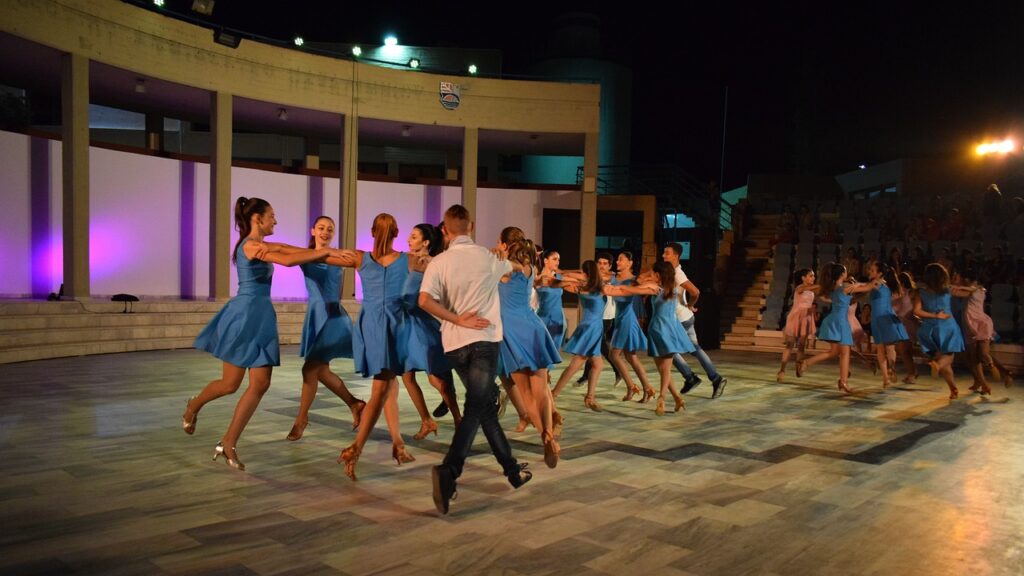
Zeimbekiko
It is a dance with numerous variations, originally danced by Zeimbekides, from where it got its name. Zeimbekides were Greeks from Thrace, who immigrated to Bursa and Aidini. They were an elite social class from which the Turkish recruited an armed force that constituted the local gendarmerie. The Turks called them infidels.
It is true that Zeimbekides slowly converted to Islam. But they never forgot their origin and the traditions of their place and kept their local Thracian folk dress until 1883, when Sultan Mahmud II ordered them to either surrender their weapons or conform to the uniform of the gendarmerie.

The approximately 40,000 Zeimbekides rebelled and in the unequal confrontation with the regular army were decimated. But from the customs of their distant homeland, Zeibekiko survived and still triumphantly survives until presently.
Their ferocious dance resembles that of the Pontians. An idiosyncratic zeimbekiko is recorded as being danced in 1856 by Zeimbekides or midwives of Makrinitsa, Volos. The characteristic of zeibekiko is that it is a solitary dance. Each dancer does their own individual figures and dances to a specific song, usually only once. Woe to anyone who interrupts the dancer.
Turkish zeimbekiko is danced in groups, while the Cypriot one is only performed by women. There are types of zeimbekiko that are danced with a quick walk around the perimeter of the dance floor. It is not the rhythm that differentiates the types of zeimbekiko, but the style. Since there is no standardised pacing, figures take on a semiotic prominence and alternate at ease.

The dancer is forbidden to bend down to pick up anything that falls from his pocket. Sometimes he lifts with his mouth a lit cigarette or a glass of wine that rests on the floor convincingly with a friend accompanying him, clapping his hands on his knees. A very spectacular figure is the one where the dancer lifts a table with plates and glasses with his teeth, a scene immortalised by Alexis Damianos in the film Evdokia. As for the slapping of the thigh with the palm, it expresses surprise at hearing sad news.
Χasapikos
Χasapikos has a political origin and goes back to the Byzantine dance of the butchers, which was common in a neighborhood of Constantinople. It is no coincidence that there is also xasapikos dance from Sifnos, apparently because many citizens of Constantinople moved to Sifnos. It was danced mainly by butchers at their guild celebrations. Most of them were Arvanites, who went around defiantly displaying their weapons and were as trembling as the janissaries.

Xasapikos is a dance performed by two or three people, men and women, with steps and figures that require timing, discipline and precision, in contrast to the improvisational zeimbekiko.
Xasaposerbikos
Xasaposerbikos is a transformed and expanded dance pattern of the already native xasapikos and was shaped by the influences of other people of the Balkans and Eastern Europe. These people reached the large urban centers and the ports of Asia Minor and Eastern Thrace for commercial or livelihood reasons. Itinerant musicians, many of whom were gypsies, played a key role in the undeniable music-dance interactions that followed.

Its basic dance pattern is occasionally presented as a variant, but at the same time coordinated by the entire dance group where patterns similar to those of Serbian, Romanian and Eastern European Slavic dances are observed. Xasaposerbikos is undoubtedly dance of Slavic origin.
Karsilamas, kamilieriko, aptaliko
It is especially common in wedding ceremonies and entertainments. In the traditional performance of the dance, women hold a scarf by two diagonal ends, with the arms extended or bent at the elbows, and move the arms left and right, or spin the scarf in a circle in one direction, until it is folded, and then it is unfolded in opposite movement. It gets its name from this peculiarity, since karsi in Turkish means opposite.
It is danced by a couple, while in Rhodes by two women, who pretend to embroider. Κarsilamas, apart from the coasts of Asia Minor, was danced in Thrace and Lesvos. Karsilamas differs slightly structurally from the zeibekiko, with which it maintains a direct kinship of rhythmic, melodic and kinetic structures. It probably takes its name from the camel, because the dancer imitates its gait and sway.
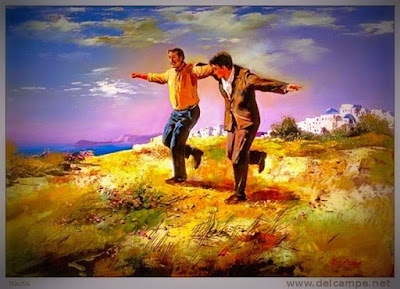
Tsifteteli
It is a fast and lively rhythm, which spread in Greece after 1923. It is a dance that evokes lust. This is the main reason why foot steps play a minimal role.

Almost the entire dance is based on the pulsating chest, the swaying of the hips, the breaking of the waist, the garlands of the hands, in short, the points of the body that are considered indicative of female femininity. Tsiftetelli on the table seems to have always been customary and is related not so much to the attractive dancer being in a prominent position as to the limitation of space, in the absence of which she interspersed the movements and figures of the rest of the body, except for the legs which the more it rocks the stronger it pulls.
Tsamikos
Tsamikos is a traditional Greek dance. The name of the Tsamikos dance comes from the surroundings of the Kalamas River (Thiamis, Tsamis, Tsamikos), in the wider area of Paramithia in Epirus. Tsamikos is also called Kleftikos because was loved and danced a lot by thieves. As a heroic dance, it was first danced by men, but later women were added to the circle of the dance. Tsamikos, after every battle and victory, had its due.
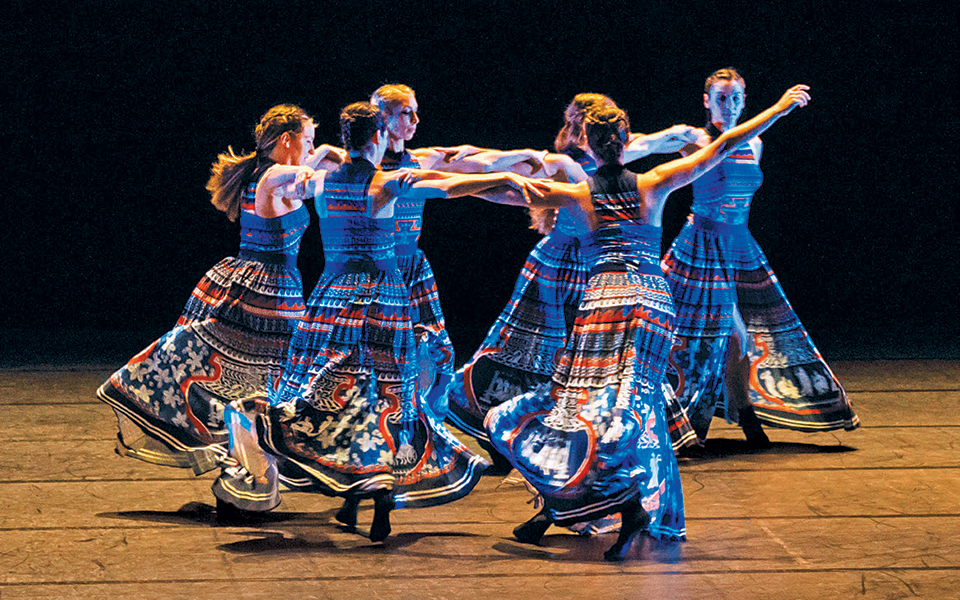
Tsamikos is danced all over Central Greece with some peculiarities. One of the peculiarities is the rhythm of the music. Tsamikos is danced at various social events, weddings, baptisms, festivals. It is also performed by dance groups of various cultural unions.
The expression of dancers dancing at social events is more spontaneous and different from that of dancers belonging to dance groups, which is necessarily more stylised and standardised due to the imposed appearance.
The expression of the dancers is also influenced by the words of the song, the way of performance, the space and the quality of the performance of the musical instrument. The movements should be in harmony with the background of the song. The leader must experience the song and respond to its style and should not get carried away in exaggerations. The top dancer in Tsamikos must be ecstatic but not indulge in abusing moves.
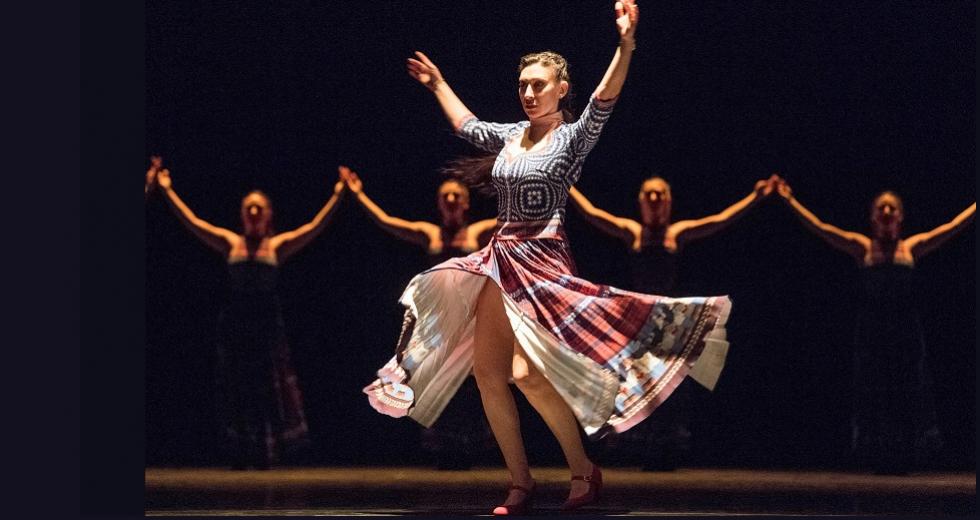
A top dancer must know what moves suit him and not copy moves that don’t suit him and are beyond his capabilities. The dance has the same steps throughout the dance and they do not change the steps at any point while it is being danced. The person who dances at one end and leads the others gets used to making figures, and the dance is more concentrated on that person.
Zonaradikos
Zonaradikos is a traditional dance from Thrace, brought to Greece by refugees from Eastern Romilia. It is a mixed dance (danced by men and women), circular, widely spread throughout Thrace. It owes its name to the fact that the dancers are caught by each other’s belts. The men enter first and the women follow. According to the customs of the past, the last man, who would catch up with the first woman of the women’s circle to form a single dance circle, had necessarily to be related to her. When the music becomes intense, only men dance in a straight line (and not in a circle as usual).

Syrtos(Kalamatianos)
The most widespread type of traditional dances in Greece, with ancient origins. It has formed the basis of many variations, of which the best known are those of Chania and Heraklion in Crete, Chios, Kefalonia, Zakynthos, Corfu, Rhodes, Serres and Thrace. The most popular drag dance is Kalamatianos, originating from the Peloponnese. In its basic form it has twelve steps, of which the first seven are forward and the remaining five in place.
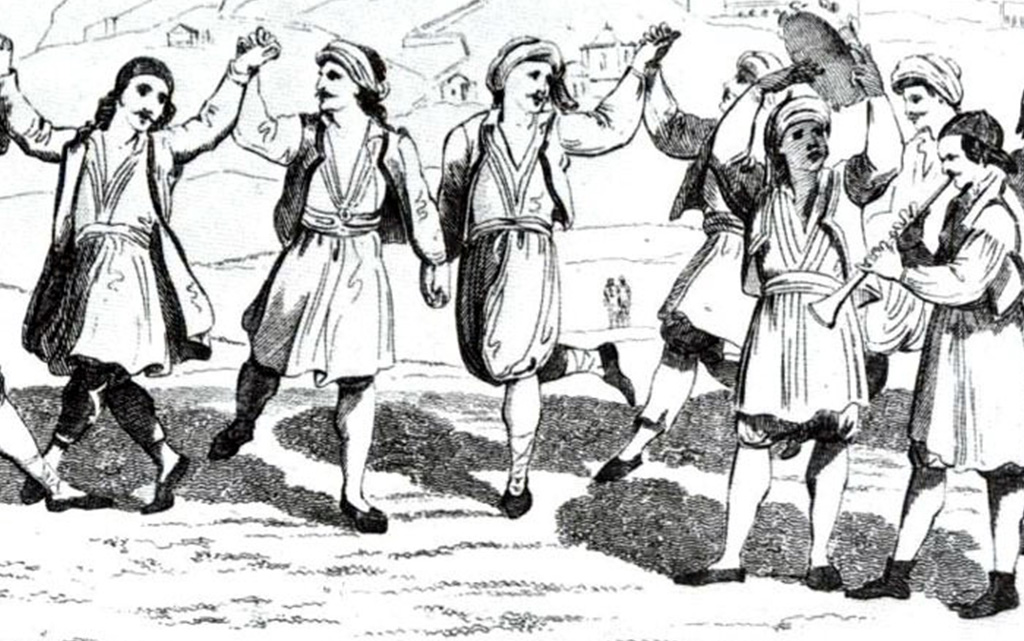
There are several theories – some quite exaggerated – regarding the original origin of Kalamatianos (and the syrto in general), but what is certain is that characteristics of the syrto Kalamatianos are depicted on many vases, votive columns and clay figurines.
Pentozalis(Pentozali)
Pentozalis, a dance particularly popular throughout Crete, is danced by both men and women. It is accompanied by a multitude of melodies. A purely martial dance, it demonstrates insurrection, levity, heroism and hope. The black woven scarf (sariki) that the dancer wears on his head testifies to the sacrifices of the Cretan people. It has old roots and is related to the ancient Pyrrichi , which was an armed men’s dance, especially of the ancient Doric state. Pyrrichios, as a Doric, war dance, was danced in both Athens and Sparta. Over time it was preserved and shaped in Crete as Pentozalis, the dance that is now danced in Crete.
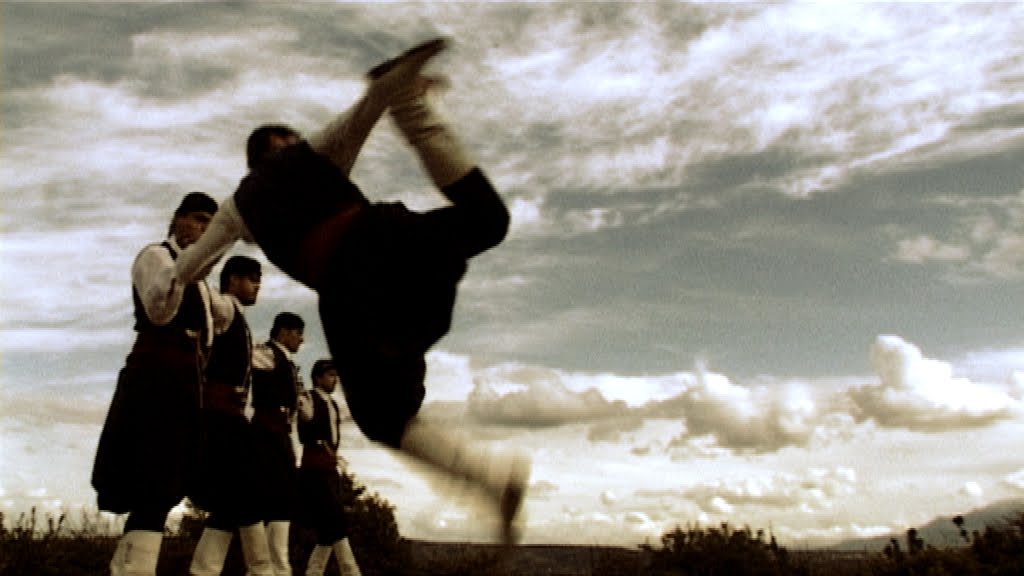
Maleviziotikos(Kastrinos)
It is danced by men and women, who form a circle and are grasped by the wrists with elbows bent. Attention is the starting point. Its name indicates its origin from Kastro (Heraklion) or from the province of Malevizio in the prefecture of Heraklion. In some villages of the prefecture of Rethymno it has also been recorded as Kougitis.

Susta
Well-known Cretan dance, by the survivors in our era and now considered as “Pancretan”. Its origin is from the prefecture of Rethymno, which is why it is often called “Rethymno susta”. This is probably the reason why the dance was renamed during the Venetian period to “susta”, from the Italian word susta which means spring. His former name is not known.

It is danced by pairs of men and women, particularly erotic, with many hand figures while the foot steps remain almost always the same. Susta, as is well known, was the only opportunity for young people of different sex not only to approach each other but also to touch (hands) and to express their eroticism with every movement and look. Of course, in the Cretan societies of the past, which were all of strict morals, susta was usually danced by related married couples, while the dancing couple between “foreign” young people needed attention, because it caused social comments.
Balos
Balos is a pantomime dance that expresses romantic attraction, which is why it is a dance without sudden movements, while there is enough freedom in terms of both movements and figures. It is a folk dance that received western influences during the years of the French occupation. The dance moves are elegant and both dancers hold handkerchiefs. The cavalier makes various moves trying to impress his lady, while she avoids him by playing hard to get.

Baidouska
Baidouska is a circular dance in a six-beat rhythm, found in Thrace, Macedonia and other parts of the southern Balkans. Baidouska is a symbolic dance. According to the most likely version, it represents with its steps a combat tactic. In this light it is considered a war dance, while the chant of intimidation of the dancers confirms the war character of the dance.

Ikariotikos
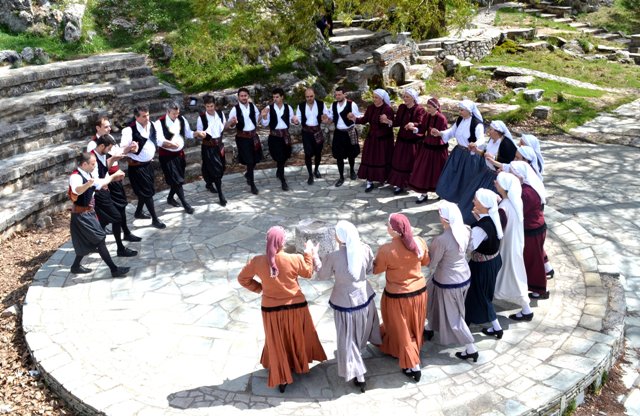
Ikariotikos stems from Ikaria and is danced on all the islands of the central Aegean. It is danced by men and women with a handle mainly from the shoulders. In the first part, there are walking steps, while in the second part where the rhythm comes to life, there are fast steps and mobility of both the legs and the body. The most famous song accompanying Ikariotikos is called “My love in Ikaria”, with lyrics and music by Giorgos Konitopoulos. In fact, on the 1975 record, it is referred to as syrto. But the real Ikariotikos (or Kariotikos as it is called in Ikaria), as the locals argue, has no relation to the Ikariotikos we all know.
Sirtos Chaniotikos(Chaniotis)
One of the most popular traditional dances in Crete today. It is also called Chaniotis, as its spread and also its birth in the form we meet today, took place in the area of the prefecture of Chania and in particular at the region of Kissamos. Syrtos as a dance with a form that we cannot know, must have existed for hundreds of years on the island of Crete. The basic melodies of today’s Cretan sirtos probably exist on the island since antiquity.
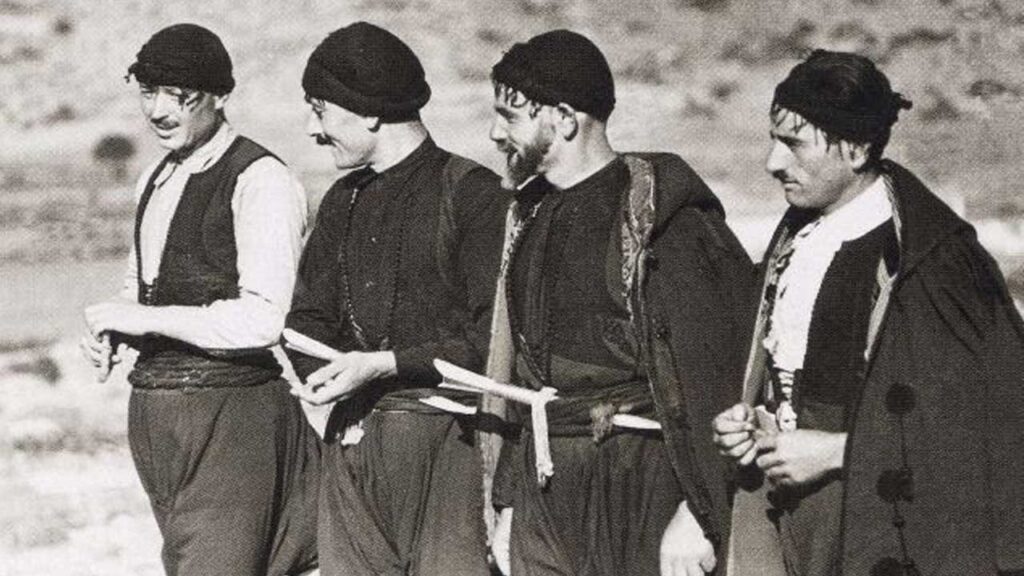
Sirtos is a layered dance, with small steps performed simultaneously by all the dancers, men and women. The dancers form a circle facing the center and hold each other with palms and arms bent at the elbows. The steps are eleven and the last one is performed in two times. In the past, when a man undertook to dance a group of women, he would dance with each in turn. The one who danced first would give way after a while to the second and he would catch up at the end and so in turn they all danced first.
Pontiakos
Pontic traditional dances are danced in a circle by men and women, who keep the body erect, the legs slightly apart, grasped by the wrists and have their hands sometimes raised and sometimes with bent elbows downwards. The small steps of the dancers are faithfully followed by rhythmic and synchronised movements of the body parts, especially the buttocks. The traditional dances are accompanied by the Pontic lyre, usually played by one of the group dancing and singing couplets, but sometimes standing in the middle of the circle.
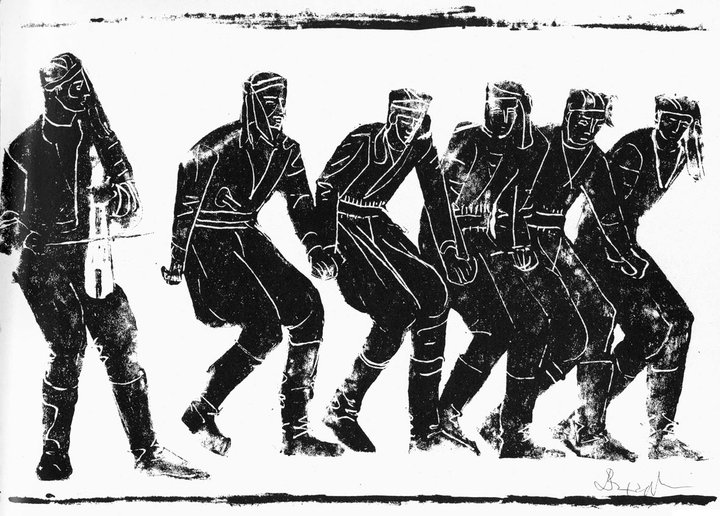
The most representative Pontic dance is the “Sera” (or Tromachton or Lazikon) – from the name of a river near Trebizond – which many identify with the ancient pyrrichios dance. It is a war dance for men, who danced it in their traditional black uniform, with their head covered with a black scarf characteristically tied, and with weapons. It has a group character and is danced by men. It was danced in ancient times in the Great Panathinaia every 4 years, in Minor Panathinaia every year, in full military uniform, as well as in the Dioskouria of Sparta.
It is also called pyrrichios dance, because the movements of the dancers imitate corresponding movements of an ancient Greek warrior, during battle. And precisely because of this particularity that the dance has, it was ranked among the most famous traditional dances in the whole world. Kotsaris dance (originating from the area of Kars) is also popular. It is a mixed, circular dance and one of the best known non-Pontian dances. It is perhaps the most famous Pontic dance after Pyrrichios dance.
Kerkyraikos
The dance is also called ruga, from the words of the song that accompanies it. The Corfu dance is characterised by lightness, grace and a strong lyrical element. It is danced in couples facing the direction of the dance. It can also start from a single circle and transform into pairs. Feet are at attention. The couples connect their inner hand with a Kalamatiano grip and bring it bent at the height and close to the shoulder. The other hand is placed in mediation.

Roditikos pidichtos
Pidichtos is one of the most representative traditional dances of Rhodes, but it is danced all over the Dodecanese. It is danced by both men and women. It is a happy, romantic dance, where the first dancer invites his lady to dance in the center of the circle. Male and female dancers, usually positioned alternately, form an open circle facing the center. The hands are connected by the palms, with the elbows bent.

Kalimniotikos
The mechanic’s dance is the most popular dance of Kalymnos and is danced at various events whether they have a sponge content or not (weddings, feasts, festivals) and is very popular. It is a purely male dance.
This dance started almost 50 years ago. But we will look for the roots of the real dance at the end of the last century.
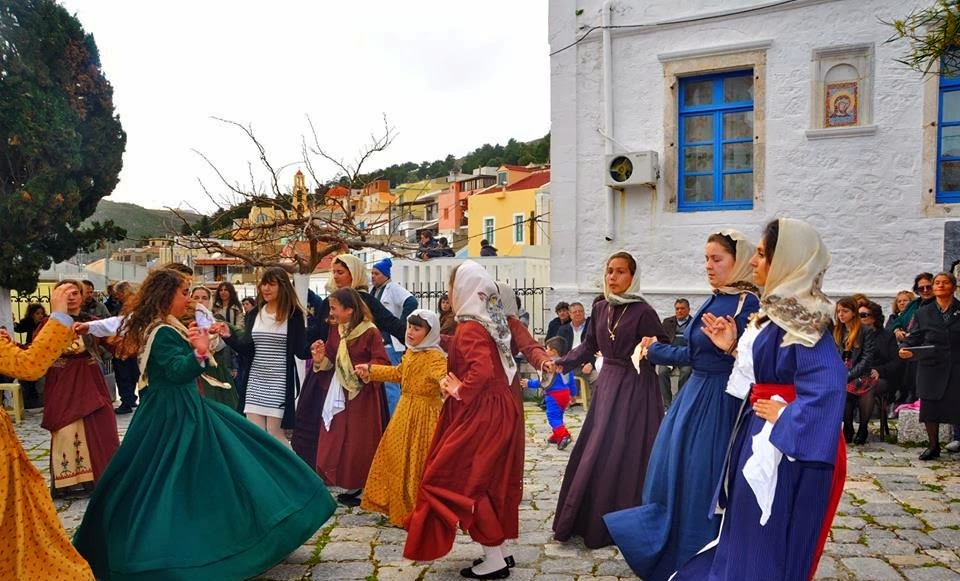
After the war (1952), a Kalimnos graduate of the Gymnastic Academy of Physical Education, Theofilos Klonaris, son of a mop mechanic, was hired at the Dora Stratos complex. So he decided to imitate the engineer’s dance himself (a dance in which the engineer trembles, falls down, and rises again to dance to the engineer’s special tune, inspired by sponge levity and bravado). Theofilos Klonaris taught the dance at the Greek High School and several young people learned to dance it, exciting Greeks and foreigners alike.
Source: https://www.pare-dose.net/85
